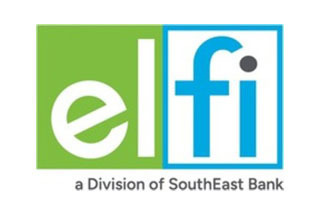529 Savings Plans Could Get Even More Flexible Under GOP Tax Bill

A provision in President Donald Trump's tax package could expand how families use 529 savings plans — stretching qualified expenses to include SAT fees, trade school certifications and more.
The legislation, dubbed the "big, beautiful bill," narrowly passed the House last month, and the Senate released its version last week, setting the stage for an intraparty debate before the bill can head to the president's desk. While much of the attention has focused on the bill’s broader tax and spending changes, a lesser-known provision would significantly expand how families can use 529 funds.
Originally designed to help families save for college, 529 plans allow contributions to grow tax-deferred, with tax-free withdrawals permitted for qualified education expenses such as tuition, fees and room and board. Over 16 million Americans have 529 accounts, with total assets exceeding $500 billion, according to the College Savings Plan Network.
Though 529 plans are primarily used to pay for college expenses, the scope of what counts as a qualified expense has expanded in recent years. For example, the 2017 Tax Cuts and Jobs Act extended eligibility to include K-12 private school tuition, and the 2019 SECURE Act now permits up to $10,000 for student loan repayment.
Under the latest version of the Trump tax bill, 529 plans would allow families to use 529 funds for an even wider array of K-12 expenses, including curriculum materials, books, online education resources, tutoring services and standardized test fees.
The House's version went even further to include a homeschooling component that would include expenditures like educational software and dual enrollment program fees. However, that is not currently in the Senate’s version of the bill.
One of the most impactful proposed 529 changes is that tax-free withdrawals would also be allowed for tuition and materials for postsecondary credentialing programs, says Andrea Feirstein, the managing director of AKF Consulting Group, which specializes in 529 plan strategy. This would make a range of vocational and certificate programs eligible for tax-free withdrawals — including training in fields like HVAC repair and cosmetology — as well as continuing education credential fees.
The credentialing expansion in particular could prove to be one of the most meaningful updates to 529 plans, according to Feirstein, potentially opening the door for a broader population of students and workers to benefit from tax-advantaged education savings.
The proposed expansion comes as more Americans reconsider the value — and cost — of a traditional four-year degree. A shifting job market, mounting student loan debt burdens and the rising cost of higher education have all challenged long-standing assumptions about the value of going to college.
“Higher education is not the only route to a successful career or livelihood,” says Feirstein. “To that end, a credentials program can present a training or educational alternative without a tradeoff for future success.”
The average cost of a vocational degree ranges from $5,000 to $15,000, while tuition for the 2024-2025 school year at a public four-year college averages nearly $12,000 for in-state students — and more than $30,000 for out-of-state students — not including room, board or the decades-long repayment period many borrowers face.
Expanding 529 plans to include these alternatives, she adds, could encourage more families to take advantage of their tax benefits — and start saving earlier. But awareness remains a hurdle: Per one poll, more than half of U.S. parents are unaware of 529 plans altogether.
By expanding the definition of qualified education expenses, lawmakers are rethinking what counts as "higher education." If passed, the changes would put skilled trades and credentialing programs on more equal footing with four-year degrees, treating them as legitimate, career-building pathways deserving of tax advantages.
"Expanding the qualified uses for 529 means that we can help more families better provide for their children’s futures," Feirstein says.
It's not the first time this issue has come up recently. Senators Amy Klobuchar, D-Minn., and Roger Marshall, R-Kan., introduced the Freedom to Invest in Tomorrow's Workforce Act in March to jump-start efforts to expand 529 eligibility to include postsecondary training and credentialing programs.
"By allowing Americans to use their 529 educational savings to pay for training and certification outside of a four-year degree, our bipartisan legislation will enable more people to access these valuable programs and open doors to good-paying jobs,” Klobuchar said in a news release at the time.
Now, with similar language folded into the broader GOP tax package, the pair's proposal is gaining new momentum. If the final bill includes the credentialing provision, it would effectively accomplish what Klobuchar and Marshall originally laid out.
The Senate's version of the bill is still subject to negotiations, and it remains unclear which provisions will make it into the final draft. Still, GOP leaders have said they're aiming to fast-track the bill for a vote ahead of Trump's desired July 4 deadline.
"We need to get it done," Senate Majority Leader John Thune, R-S.D., told Fox News on June 15. "We will roll into the Fourth of July recess, if necessary, in order to get this on the president's desk."
More from Money:
Better Than a Piggy Bank: 3 Ways to Invest for Your Kid's Future
Recent College Grads Are Discovering That a STEM Degree Doesn't Guarantee a Stable Job
GOP Tax Bill Would Extend Trump's Tax Cuts, Create 'MAGA' Accounts for Kids and More






